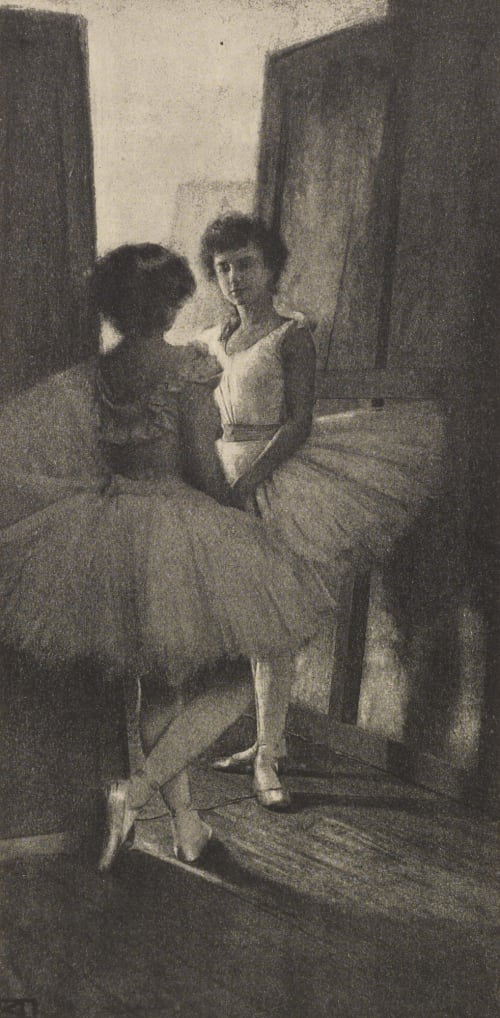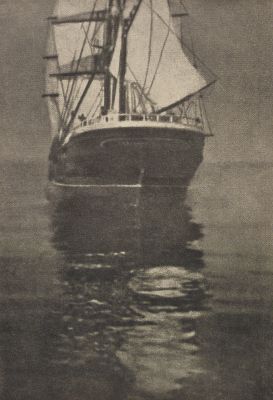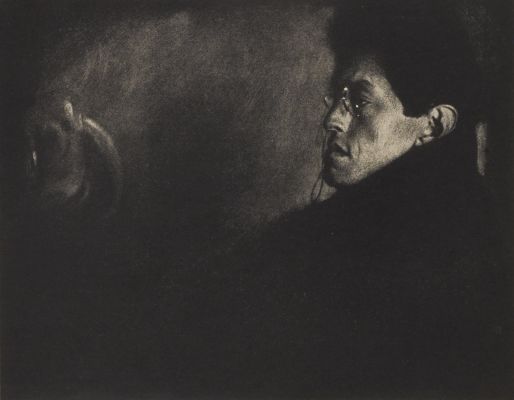
Title
Behind the ScenesArtist
Demachy, Robert (French, 1859-1936)Publication
Camera Work VIIDate
1904Process
HalftoneAtelier
Manhattan Photogravure Company, NYImage Size
19.3 x 9.6 cm
Among the most memorable subjects by Edgar Degas were his dancers in oils and pastels, which had an undeniable influence his works upon photographs, but other framing or an odd viewpoint, he rarely sought photographic effects for themselves. In Behind the Scenes, Demachy, while seeing the world through the eyes of Degas, recorded purely photographically the tonal range of the flats and the natural postures of the dancers. But the painterly quality that makes the photograph, printed about 1897, look like a pastel was introduced by the gum-bichromate process, creating a surface that diverts attention from the careful composition and effective play of lights and effective play of lights and patterns visualized by the photographer. [1]
Camera Work Number VII was described by Stieglitz as “the gum print” number as it gathered representative examples of that typically pictorialist printing process from three different photographers: the Hofmeisters, Demachy and Steichen. About the Frenchman’s works, Stieglitz wrote: “The two pictures by M. Robert Demachy speak for themselves. From the father of gum-printing these prints, together with his article thereon, must prove of exceptional value to the student.” These pictures were two of Demachy’s masterpieces, a study of artificial lighting depicting two young girls dressed as ballet dancers (Behind the Scenes) and a Turnerian snapshot full of atmosphere and modernity (Speed).
Reproduced / Exhibited
Frank, Waldo D. America and Alfred Stieglitz: A Collective Portrait. New York: Aperture, 1979. pl. 13 (titled Ballet Girls)
Photographs by Alfred Stieglitz. New York, NY: Metropolitan Museum of Art, 1978.
References
[1] Naef, Weston J. The Collection of Alfred Stieglitz: Fifty Pioneers of Modern Photography. New York: Viking Press, 1978.








